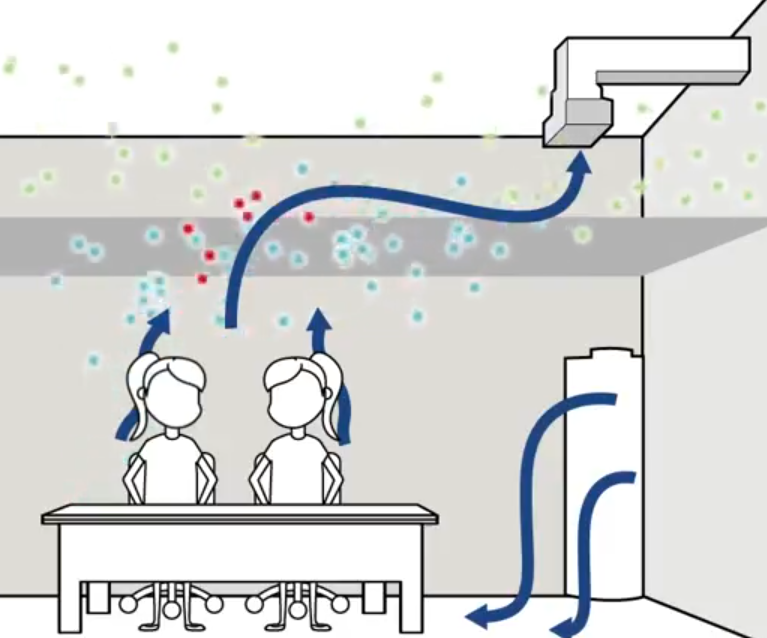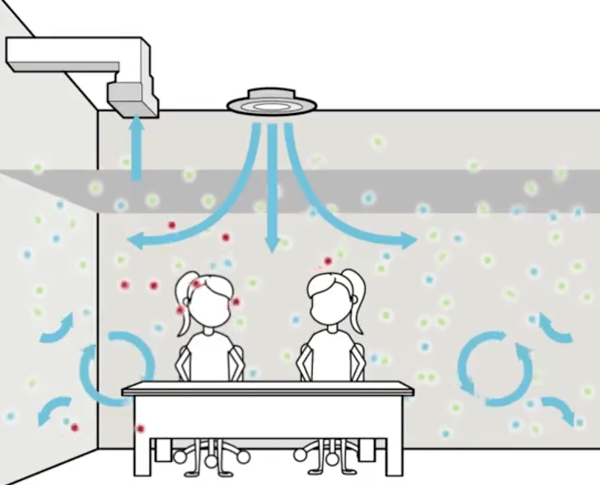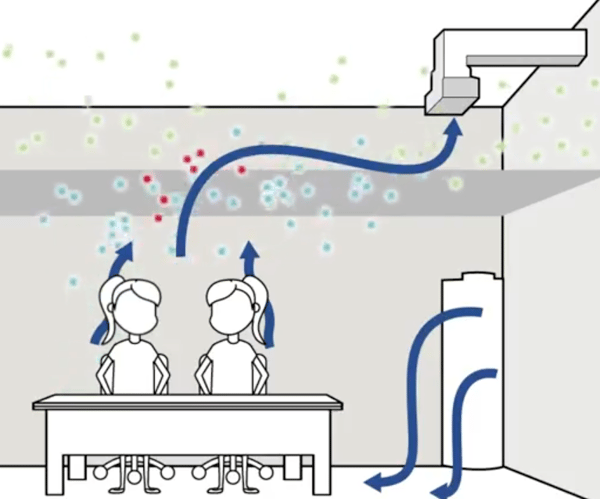The Basics of Displacement Ventilation

Indoor air quality has become a hot topic of conversation in 2020. Offices, restaurants, museums, and other indoor areas have been shut down for extended periods of time due to the global pandemic, leaving many building owners, engineers, and facilities teams to question what they can do to improve indoor air quality and lessen the chances of building occupants being exposed to viruses like COVID-19.
Our team has suggested a number of ways to improve indoor air quality for occupants. Our manufacturing partners at Price Industries offer yet another suggestion: displacement ventilation. Displacement ventilation is an alternative solution to mixed-flow ventilation in commercial HVAC systems.
What is displacement ventilation (DV)? DV uses fresh air supplied by displacement ventilation diffusers. This fresh air is then warmed by building heat sources like occupants, computers, lights, and other objects in the room. After the air is warmed, it is drawn up and exhausted through high level returns. Heat sources in the room receives fresh supply air that corresponds to their output, so higher heat sources receive MORE supply air while lower heat sources receive less. This helps to ensure occupant comfort throughout the space.
In overhead mixing systems, the supply air is delivered to the occupied space from above and fully mixed with all the air to dilute any contaminants.

In displacement ventilation, the fresh air is delivered from below, forcing contaminated air up and out. Fresh air is free to move into the space continually and moves up as it is heated by the room sources. Since the air leaves by the returns, it never re-enters the occupied space.

Displacement ventilation is suitable for a number of applications using a variety of considerations, including:
- Noise level: Because displacement ventilation supplies air at a lower velocity to avoid creating uncomfortable cool drafts, the fans move more slowly which produces less noise. In a classroom or conference room, these lower noise levels could be preferred.
- Life cycle costs: Due to the lower velocity fans, displacement ventilation can consume less energy than a mixed-flow system. Additionally, the supply air temperature is a bit higher in a displacement ventilation system.
- High ceilings: Higher ceilings enable the displacement ventilation system to remove larger heat loads.
Displacement ventilation can be a viable alternative to traditional mixed-flow designs when all design parameters are taken into consideration. Connect with your local manufacturer’s rep to see if displacement ventilation should be considered for your commercial HVAC application.
For a more in-depth look at displacement ventilation, take a look at the training video on displacement ventilation from Price Industries.
Blog content and images sourced from Price Industries.
// about the author
 Kelly Patterson
Kelly Patterson
Kelly Patterson is a lifelong learner and the marketing director at the Hoffman family of companies. There is nothing she likes more than talking about commercial HVAC systems and extraordinary customer service.












